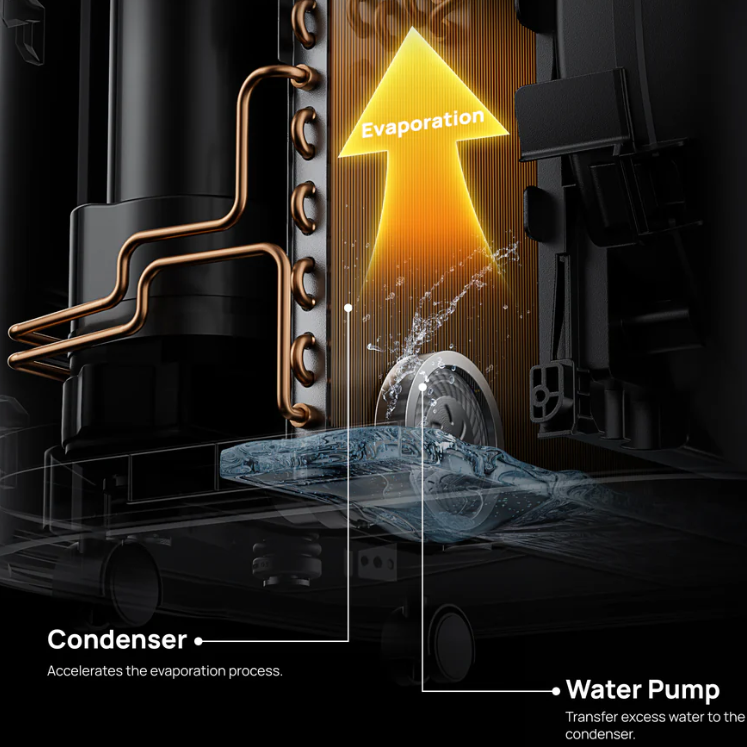When the temperature starts climbing, we all want a cool breeze to keep things comfortable. But with so many options on the market, the choice between an air circulator and a traditional fan can feel like a tough one. Both promise relief from the heat, but they go about it in very different ways. Let's dive into how they work, and why one might be the better option for your space.
How Do Traditional Fans Work?
Traditional fans, often referred to as pedestal fans, or box fans, are pretty straightforward—they blow air in one direction. The blades spin, and the air is pushed right at you, offering a quick blast of coolness where it hits. It's effective in the short term, but as you might notice, it can leave other areas of the room feeling warm. If you're looking for that "direct hit" of coolness, a traditional fan does the job. But if you're after something that spreads the air evenly across the room, these models aren't the best option.
How Do Air Circulators Work?
Now, air circulators are in a whole different league. Instead of blasting air in a single direction, air circulators are designed to move air around the entire room. It's all about smooth, continuous airflow. Think of it as a cool breeze that flows through every corner of your room—without the harsh wind you sometimes get from traditional fans.

Why Should You Choose an Air Circulator?
Now that we know how air circulators work, let's talk about why you might want one over a traditional fan. It's not just about moving air around. Air circulators come with a whole host of features that make them a serious upgrade from a standard fan.
1. Powerful Airflow, Minimal Energy Use
Advanced air circulators are designed to do more with less. For example, many models, like the DREO CF714S, with a brushless DC motor, circulate air using up to 40% less power. This makes it perfect for cooling large spaces without consuming too much electricity. The custom curved & deep-pitch blade also creates a large air-propelling area, allowing airflow that can reach up to 110 feet—66% farther than standard models. You can leave it on all day, enjoying powerful, consistent airflow without worrying about a major energy spike. It's the perfect mix of comfort and savings.

2. Oscillation: More Coverage, Less Moving Around
Air circulators often come with a wider range of oscillation, allowing them to move side to side and distribute air over a larger area. Models like the DREO CF315 offer smooth, wide horizontal 90° oscillation and 120° manual vertical tilt, that lets you feel the breeze no matter where you are in the room. With traditional fans, you often find yourself moving the fan around or adjusting the direction to get better airflow. Air circulators save you that trouble and give you consistent cooling throughout the room.

3. Whisper-Quiet Comfort:
One of the best things about air circulators is how quiet they are. Unlike traditional fans that can get pretty loud, The DREO air circulator CF312 runs at noise levels as low as 28 dB—just a soft whisper. So, whether you're working, unwinding, or trying to get a good night's sleep, you can enjoy the cool breeze without any annoying noise.

4. Wind Speeds and Modes: Tailored to Your Needs
One of the best things about air circulators is their versatility. Whether you need a gentle breeze to keep the room comfortable while you work or a stronger gust to cool things down quickly, air circulators allow you to adjust the airflow to your needs. With models like the DREO CF714S, you can choose from 9 speeds and 6 wind modes—Normal, Natural, Sleep, Auto, Turbo, and Custom—making it easy to adapt the airflow to your preferences and the room's temperature. It's like having the perfect breeze on demand, whenever you need it.

5. Smart Control: Cooling at Your Fingertips
Gone are the days of getting up to adjust your fan! With smart control features, advanced air circulator models let you control everything from your phone or remote. You can adjust the speed, set timers, or switch between modes—all without ever having to leave your seat. It's the kind of convenience you never knew you needed, and once you experience it, you won't want to go back.
Final Takeaway
At the end of the day, it all comes down to what you need in a fan. If you're after a quick, intense blast of air, a traditional fan might do the job. But if you're looking for an energy-efficient, consistent, and quieter way to cool your entire room, a DREO air circulator will elevate your comfort to the next level.



